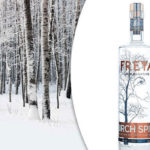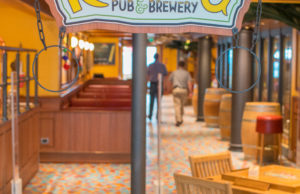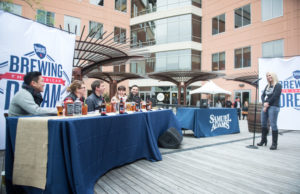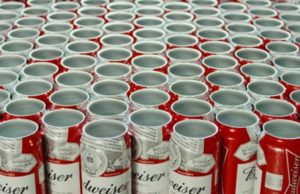Dead distillers: Weird and wonderful stories of US whiskey and moonshine makers
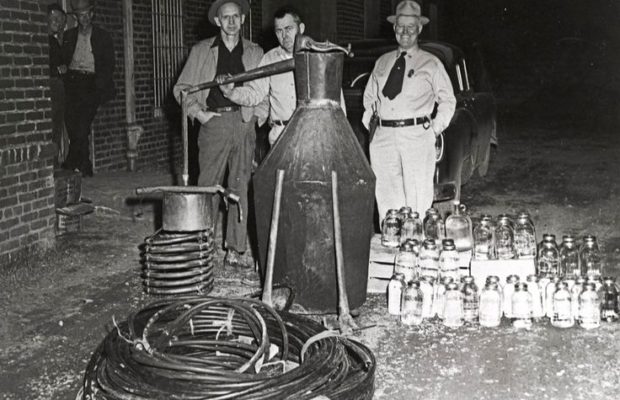
Dead Distillers by Colin Spoelman, David Haskell and Kings County Distillery published by Abrams is. Click here to view original web page at www.concordregister.com
We’re so used to seeing Jack Daniels’ name emblazoned across and merchandise from t-shirts to guitars, that it’s easy to forget that he was a real man who brewed whiskey in Lynchburg Tennessee. Or that seven generations of Bourbon-makers have been involved in the production of Jim Beam, made in Clermont, Kentucky.
To forget the people behind some of the world’s best-selling drinks, but particularly those that have sunk into obscurity, is to miss out on the rich and oftentimes bizarre history of brewing in the US, as mapped out by New York City-based award-winning bourbon and whiskey-makers Colin Spoelman and David Haskell in their book Dead Distillers: A History of the Upstarts and Outlaws Who Made American Spirits. The pair chart the history with the tombstones of dead distillers as their starting point.
Since Dutch businessmen Cornelis Melyn and Willem Kieft established the first distillery in the US four hundred years ago, hard liquor has been a part of the nation’s culture. As the book addresses, as well as Jim Beam and Jack Daniel, president George Washington was among those who dabbled in distilling. And during his tenure in 1791 the Whiskey Rebellion was a protest against the first ever tax on the drink by the relatively new federal government. Fast forward almost two centuries later and the Nationwide Prohibition introduced in 1920 banned the production, sale, and important of alcohol of 13 years. Now, the US is among nations witnessing a revival of craft spirits.
As the title suggests, whether real or at least slightly romanticised, the work of these distillers conjures up notions of industrious and honest men and women working hard to make a few bucks out of intoxicating products, and in turn carving out their own versions of the American Dream.
Below are some of their favourite stories from the book.
Mark Wazeniak, Moonshiner (1890 – Unknown)
Mary Wazeniak ran a speakeasy in Brookfield, Illinois, near Chicago. One evening, in 1923, George L. Rheaton, of LaGrange, Indiana, bought five or six shots of Mary’s moonshine. He staggered out of the bar, walked about two hundred feet, and fell dead. Chemical analysis during an autopsy indicated that Rheaton died of methanol poisoning. “Moonshine Mary,” as the press dubbed her, was thirty-four years old and a mother of three when she was sentenced to a year to life. This is what we know of Mary. It’s not much. And to read this, you would think that it was Mary who poisoned Rheaton, but it wasn’t.
It was the federal government. By the mid-1920s, Prohibition’s noble experiment was starting to show great wear on the people for whom it was meant to benefit. Still, alcohol was not that hard to find, as industrial alcohol is a necessary ingredient in after shave, antifreeze, felt hats, embalming fluid, and fuel. Recognising this temptation, and as a deterrence, the government routinely altered the chemical composition of the spirit to make it undrinkable. The added chemical was methanol, which in trace quantities is present in all fermented beverages and in most distilled spirits—it’s a simpler alcohol molecule, sometimes called wood alcohol—but in concentrated form is highly toxic. As little as thirty millilitres of methanol can blind a person; sixty millilitres is lethal. The federal government, in its wisdom, decided to add methanol to ethanol (the chemical we drink) so that it couldn’t be consumed safely.
And yet methanol has a slightly lower boiling point than ethanol, and some enterprising moonshiners reasoned that the two could be separated through distillation. This is technically true, but difficult in practice, especially at the scale of a bootlegger using copper pots as small as ten gallons. Inevitably, methanol contaminated the ethanol, and people frequently got sick.
Over the Christmas holiday in 1926, for instance, twenty-three people died from methanol poisoning in New York City. The medical examiner, Charles Norris, spoke out against what he called a “national experiment in extermination.” Government officials at the time—and many historians today—explain away such deaths as inevitable, given the country’s ravenous appetite for spirits. But most of the deaths were avoidable. Imagine today’s government, in an effort to reduce drug use, spraying marijuana crops with poison.
These days, people still fear homemade alcohol as something that might blind or kill the drinker. But if it is made from properly fermented sugars, there’s no reason to expect moonshine to contain anything higher than ten parts per million of methanol. This is five to six times less than most commercial alcohol. You would have to drink north of thirty gallons of moonshine to get a harmful dose of methanol, and would die from the ethanol long before that became a possibility.
John Daly, Fireman. Frank Trennor, Assistant Fireman. Joseph and Mrs Horaka, Shaving-Pushers. ‘Sandy’, Miller. Frank Podratz, Coal-Wheeler. Jacob Kakuska, Engineer. All died 1880
Under the massive headline “BLOWN TO ETERNITY,” the Chicago Tribune described the explosion of a steam cooker at Simon Powell & Sons Distillery in 1880, which was located at South Canalport Avenue and South Morgan Street. The engineer had built a pressure cooker for the mash, which was desired to improve efficiency at the distillery, though at the time of the accident, it had been used only a few times. The distiller on duty had a clog in the line and directed the engineer to increase the steam to blow the clog through. The boiler exploded. “It was blown through the roof, and went almost straight up into the air, some say until it looked no larger than a flour-barrel. The main portion landed on the west side of Morgan Street, about 175 feet west and a little to the north of its original location . . . the jagged edge of the riven iron looked like a mammoth fruit can which had been chopped open with a dull instrument.”
Six died in the explosion, including Sandy (his last name went unrecorded), a Scotsman who was mortally injured by the concussion and scalding, his body “badly mangled and so horribly scalded that the skin and portions of the flesh peeled off to the touch.” When fireman Daly’s wife found her husband’s body, “her grief became uncontrollable, and it was with great difficulty that she was taken from the room to prevent her from throwing herself prostrate upon the disfigured remains.”
The saddest story of all was Joseph Horaka, whose wife was bringing him supper at the time of the explosion. Both were buried in the wreckage. “In the mass of bricks and shavings a young man found a shawl and a piece of a dress. ‘Here’s the woman,’ he shouted, and immediately a crowd gathered about him. A few began digging into the shaving with their hands, and soon a slipper and a dinner-pail were brought out.” But after several hours of digging the bodies could not be found. Their fifteen-year-old daughter came to the scene, “crying as if her heart would break,” whereupon she claimed the shawl and other articles. “She identified them all at once. But even this did not add to her already strong conviction that both her parents were in the ruins.”
Thomas Lincoln, Whiskey Trader (1778-1851)
Born in Virginia, Thomas Lincoln moved west with his father into Kentucky to a remote plot of frontier land at the suggestion of a distant relative, the pioneer Daniel Boone. At age eight, while he and
his two older brothers were planting in a field a good distance from their house, they witnessed their father’s attack and murder by an Indian. His older brother, Mordecai, shot the Indian dead with a rifle moments later. His mother, Bathsheba, moved the family again to Nelson County, Kentucky.
Generally unambitious and incompetent, Lincoln rarely found paying jobs in Kentucky, though he was known as a decent carpenter. He married in 1806 and, after a decade of hard luck, endeavoured to move north to Indiana, where land was reportedly inexpensive and fertile. When the time came, he traded his worldly goods for whiskey barrels he hoped would serve as the currency for a new life. His two young sons attended the casting off of the boat from the Rolling Fork River into the Ohio, but the boat capsized in an eddy, sending several barrels and a set of tools into the river. Some barrels were recovered, as were the tools, and Lincoln found an oxcart to bring them to the new land where he eventually settled.
One of his sons, young Abraham, would never be much of a drinker, perhaps because he witnessed much of the family fortune floating down the river. In 1862, acting in his capacity as sixteenth president of the United States, he passed into law an emergency wartime revenue act, taxing sinful and luxurious goods such as tobacco, playing cards, pianos, yachts, feathers, and distilled spirits, thus creating in the United States the concept of the illicit distiller, or moonshiner. Lincoln’s excise tax, though designed as a stopgap measure to raise funds for the Union, remains to this day, and helped fund expansion of the federal government after the Civil War, until the income tax passed in 1913.
Thomas Lincoln and his son stopped speaking in later years. They disagreed over the virtue of religion and education. The younger Lincoln did not attend his father’s funeral and would not pay for a headstone.
Dead Distillers by Colin Spoelman, David Haskell and Kings County Distillery published by Abrams is.






